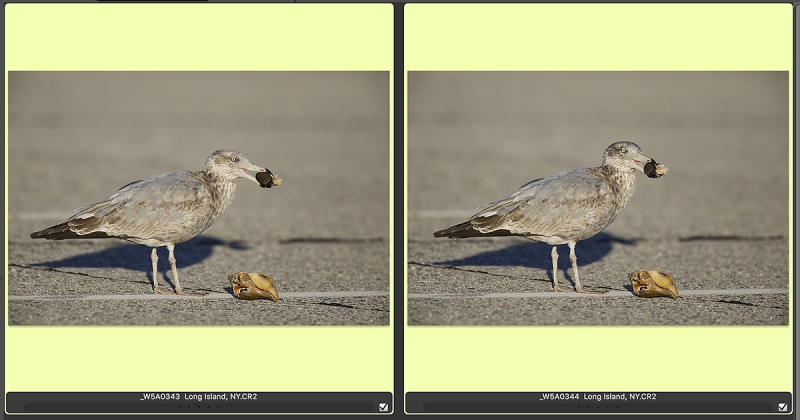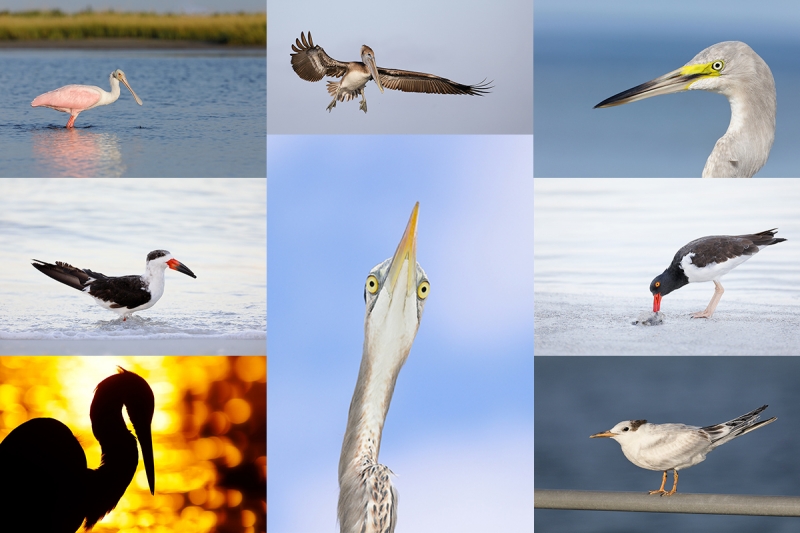Stuff
With the alarm set for 3:30am I was in bed at 8:30 and asleep by nine. I woke feeling well-rested at 3:09am. I showered, had a quick breakfast, and finished packing at 4:44. The cab was outside waiting and off we went. I did not get TSA-Pre and though there was a big crowd at Southwest curbside check-in and at security, things went smoothly. I prepared this blog post on my nonstop flight to Orlando and will save it once we hit the ground, assuming that we do so right-side-up. 🙂
I exercised and got back in the pool late on Sunday for my usual slow 3/4 mile. It all felt good.
If you are interested in joining the Fort DeSoto Early Winter IPT at this late date, please shoot me an e-mail or call me on my cell at 863-221-2372 (and leave a message if I do not pick up).
The Streak
Today makes one hundred twenty-one days in a row with a new educational blog post! This one took more than an hour to prepare. With all of my upcoming free time (or not …), the plan right now is to break the current record streak of 480 … Good health and good internet connections willing.
Booking.Com
Booking.Com came through for me twice again recently with both the DeSoto Fall IPT and next July’s UK Puffins, Gannets, and Bempton Pre-trip room reservations. And all the rates were great. If you’d like to give Booking.Com a shot, click here and you will earn a $25 reward. Thanks to the many who have already tried and used this great service.


Gear Questions and Advice
Too many folks attending BAA IPTs and dozens of folks whom I see in the field, and on BPN, are–out of ignorance–using the wrong gear especially when it comes to tripods and more especially, tripod heads… Please know that I am always glad to answer your gear questions via e-mail. Those might include system, camera body, accessory, and lens choices and decisions.
|
|
|
These two images was created on the morning of Saturday, November 25, 2017 at Field 2 in Robert Moses State Park, Long Island, NY. I used the hand held Canon EF 600mm f/4L IS II USM lens, the Canon Extender EF 1.4X III, and my favorite gull photography camera body, the Canon EOS 5D Mark IV. ISO 400. Evaluative metering + 1/3 stop as framed: 1/2000 sec. at f/6.3 in Av mode. AWB in sunny conditions at 7:43am. LensAlign/FocusTune micro-adjustment: -2. Two AF points to the right of the center AF point/AI Servo/Expand/Shutter Button AF was active at the moment of exposure. In each image, selected AF point just caught the front edge of the bird’s breast pretty much on the same plane as the bird’s eye. T the assist points surely came into play. Herring Gull, second cycle with shattered whelk.Be sure to click on the image to enjoy the larger version. Note: the lens was rested on the window frame atop a woolen watch cap. To make comparison of the two images easier, click on the composite to see a larger version. |
The Whelk Solution to Wind Against Sun …
As we saw in yesterday’s blog pot, you can be pretty much up against it with wind against sun conditions as most birds will be facing completely away from you when you are (properly) working on sun angle. One trick involves finding birds that are foraging or feeding. Shorebird searching the mud or the shallows will often feed without regard for the wind direction. While driving on the park roads that morning, I noticed several gulls feeding on large mollusks or crabs that they had intentionally dropped from on high to crack their prey items. The state park rangers at Moses frown upon folks stopping along the roadways to photograph. When I passed a great black-backed with a decent-sized whelk I backed up, grabbed the whelk, drove to Field 2, and tossed it high in the air. Within seconds several gulls flew over to investigate.
The second cycle Herring Gull that is featured in both images above was — for unknown reasons — the dominant bird. And — as I had hoped might be the case, it completely disregarded the northwest wind as he enjoyed his feast, opting instead to pose pretty much pretty much square to the back of the camera. Note that the two consecutive frames above were made in the same one/one-hundredth of a second at 7:43:19. In addition to the birds that visited the whelk others nearby fed on shatter clams, conchs, and crabs.
Which is Your Favorite?
If you were only going to optimize one of today’s featured images, which one would you choose. Be sure to let us know why you made your choice. I am pretty much stumped as there is something that I like about each image. Remember that the more folks who opt to leave a comment, the more everyhone learns.
|
|
Recent Fort DeSoto ImagesFrom bottom left clockwise back to center: Great Egret, blasting sunrise highlights; Black Skimmer, winter plumage in pre-dawn light; Roseate Spoonbill foraging; Brown Pelican, juvenile landing; hybrid heron X egret???; American Oystercatcher feeding; Royal Tern, worn juvenile; Great Blue Heron from below. You can see a composite of more recent images in the DeSoto Sucked This Past Weekend blog post here. |
Fort DeSoto Early Winter IPT. 3 1/2 days: $1599
Saturday DEC 2 (afternoon session) through the full day on Tuesday DEC 5, 2017. Meet and Greet Introduction on SAT DEC 2, 2017
With no water in Estero Lagoon, Corkscrew Swamp and Anhinga Trail total busts for many years, and Ding Darling NWR managed into oblivion, Fort DeSoto has emerged as the premier bird photography location in the state. Join me in early winter to escape the cold weather and photograph lots of tame terns, gulls, herons, egrets (including Reddish Egret), shorebirds (including and especially Marbled Godwit), Osprey, and Brown Pelican. Long-billed Curlew, Wood Stork, and Roseate Spoonbill all range somewhere between likely and possible.
Learn to get the right exposure every time, to approach free and wild (and often tame!) birds, and to design a pleasing image. And learn the location of my new Fort DeSoto hotspot along with my favorite sunset location (sky conditions permitting). To register call Jim or Jen at the office at 863-692-0906 or shoot me an e-mail.
DeSoto IPT Details
This IPT will include four 3 hour afternoon sessions, three 3 1/2 hour morning sessions, three lunches, and after-lunch image review and Photoshop sessions. To ensure early starts, breakfasts will be your responsibility. Dinners are on your own so that we can get some sleep.
Your $499 non-refundable deposit can be paid by credit card. Call Jim or Jennifer at the office on Monday with a credit card at 863-692-0906 to register. Your balance must be paid by check once you sign up. The balance check (made out to “BIRDS AS ART) should me mailed to us at BIRDS AS ART, PO Box 7245, Indian Lake Estates, FL, 33855. Please print, complete, and sign the form that is linked to here and shoot it to us along with your balance check. If you have any questions, please feel free to contact me via e-mail.
Canon lens rentals are available on a limited basis: 600 II, 500 II, 400 DO II, and 200-400 f/4 with Internal TC.
If In Doubt …
If in doubt about using the BAA B&H affiliate link correctly, you can always start your search by clicking here. Please note that the tracking is invisible. Web orders only. Please, however, remember to shoot me your receipt via e-mail.




Please Remember to use my Affiliate Links and to Visit the New BAA Online Store 🙂
To show your appreciation for my continuing efforts here, we ask, as always, that you get in the habit of using my B&H affiliate links on the right side of the blog for all of your photo and electronics purchases. Please check the availability of all photographic accessories in the New BIRDS AS ART Online Store, especially the Mongoose M3.6 tripod head, Wimberley lens plates, Delkin flash cards and accessories, and LensCoat stuff.
As always, we sell only what I have used, have tested, and can depend on. We will not sell you junk. We know what you need to make creating great images easy and fun. And please remember that I am always glad to answer your gear questions via e-mail.
I would of course appreciate your using our B&H affiliate links for all of your major gear, video, and electronic purchases. For the photographic stuff mentioned in the paragraph above, and for everything else in the new store, we, meaning BAA, would of course greatly appreciate your business. Here is a huge thank you to the many who have been using our links on a regular basis and those who will be visiting the New BIRDS AS ART Online Store as well.
Amazon.com
Those who prefer to support BAA by shopping with Amazon may use the logo link above.
Amazon Canada
Many kind folks from north of the border, eh, have e-mailed stating that they would love to help us out by using one of our affiliate links but that living in Canada and doing so presents numerous problems. Now, they can help us out by using our Amazon Canada affiliate link by starting their searches by clicking here.
Be sure to like and follow BAA on Facebook by clicking on the logo link upper right. Tanks a stack.
Typos
In all blog posts and Bulletins, feel free to e-mail or to leave a comment regarding any typos or errors. Just be right :).
















Hi, Artie. I’ll be one of the sheep and prefer image #2 for the reasons the others have given, but there’s not much to choose between them; both are good. Herring gulls always seem to be the dominant gulls in my experience. I’ve seen them steal food from great black-backed gulls, but never vice versa. They also are the only east-coast gulls that drop things to break them so they can eat them.
GBBGs also drop mollusks 🙂
a
Unquestionably the 2d one. Better head angle and feel of movement and connection.
Hi Artie,
tough choice.
I prefer the head angle in image 343 but the stance of the gull is more upright in 344, with the head turned towards the camera a bit more which I like better.
David.
I really like both, but I would have to go with image #1 because the eye is pointed at you which tells a little more of the story in my eyes.
I slightly prefer the second image because the gull’s head is angled towards the camera. You feel a greater connection to the bird, it adds dimension to the image, and the slightly darker feathers on the bird’s head help to create more balance. I also feel the image communicates a stronger association between the whelk’s body and its shell because both pieces are aligned along the vertical third.
I agree with Richard. 344 shows a bit more action and interaction with photographer with the head turn. But I’d keep both. The position of the empty shell is perfect.
I like both but would probably choose the second (344). I think the slight turn toward the camera adds interest, maybe more interaction with the viewer.